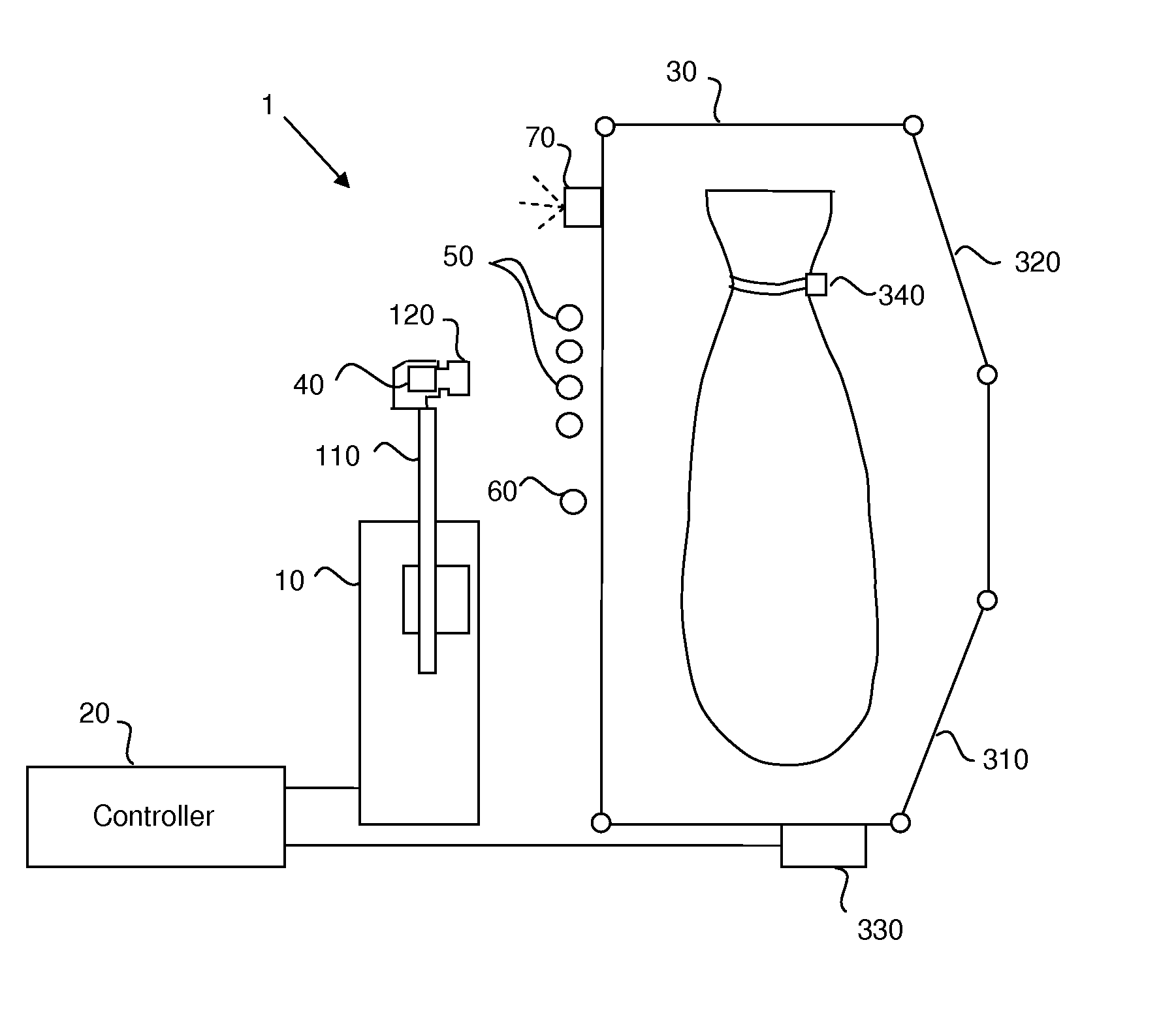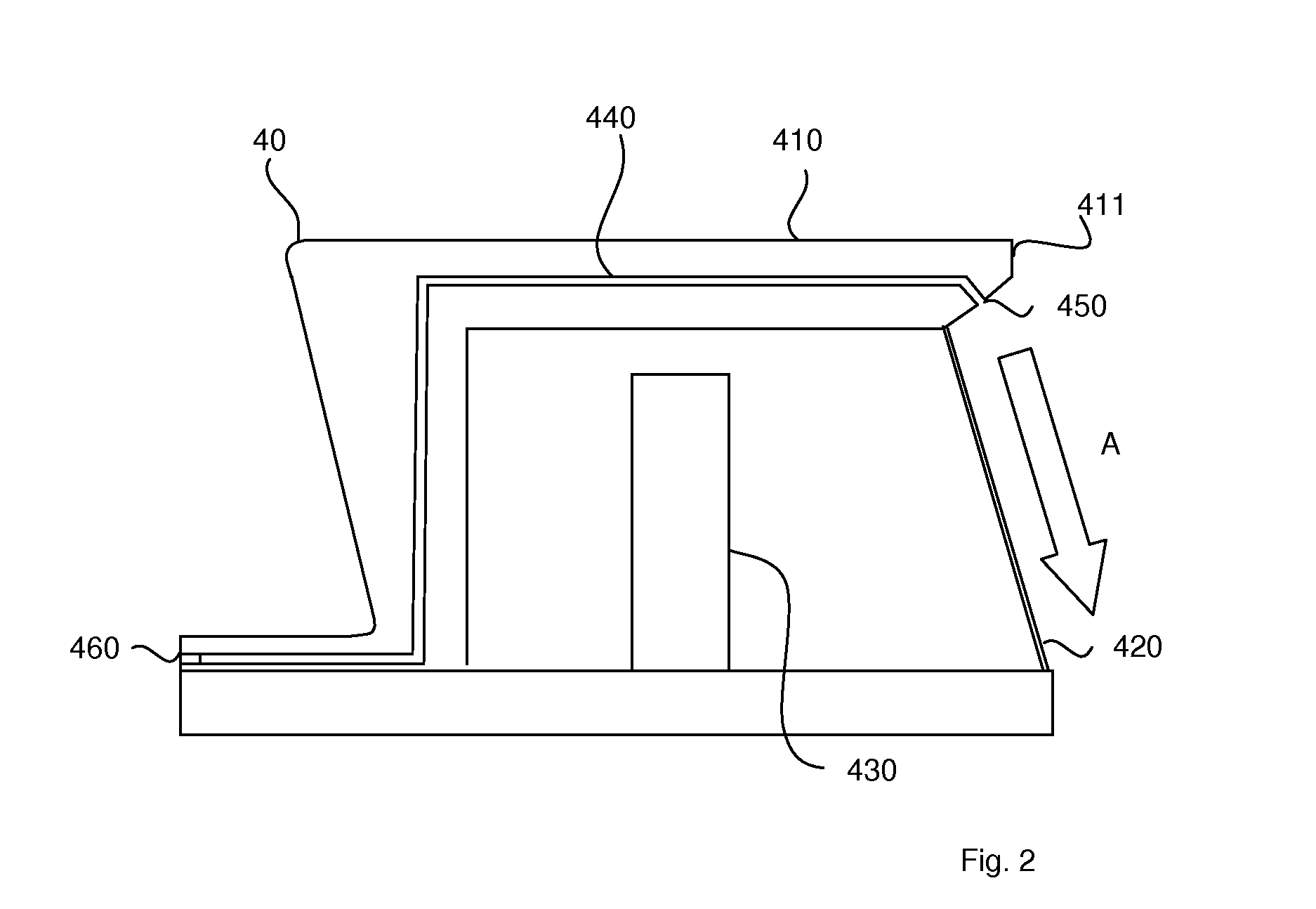Method and apparatus for protecting an optical detection device from contamination
a technology of optical detection and protection equipment, applied in the field of optical detection devices, can solve the problems of reducing the operating cost of the device, limiting the risk of unnecessary air turbulence, and attendant airborne contamination, and affecting the operation of the device. the effect of reducing the risk of air turbulen
- Summary
- Abstract
- Description
- Claims
- Application Information
AI Technical Summary
Benefits of technology
Problems solved by technology
Method used
Image
Examples
Embodiment Construction
[0028]FIG. 1 shows an automatic milking system, which includes a milk box 30 for retaining an animal to be milked and a milking robot 1 disposed to one side of the milk box 30. The milk box 30 includes an entrance gate 310 and an exit gate 320. An identification device 330 is mounted on or near to the milk box 30 close to the entrance gate 310. This device 330 detects the unique identification of an animal standing before the milk box by detecting or interrogating a transponder 340, that is carried by the animal, for example on a collar, and holds a unique identification number or code assigned to the animal. The control of these gates will be described in more detail below. The milking robot 1 includes a robot arm construction 10 as well as a number of other components not shown in the figure but conventionally present in this type of arrangement. These components typically include, but are not limited to, milk and pulsation lines and associated elements of the milk and vacuum circ...
PUM
 Login to View More
Login to View More Abstract
Description
Claims
Application Information
 Login to View More
Login to View More - R&D
- Intellectual Property
- Life Sciences
- Materials
- Tech Scout
- Unparalleled Data Quality
- Higher Quality Content
- 60% Fewer Hallucinations
Browse by: Latest US Patents, China's latest patents, Technical Efficacy Thesaurus, Application Domain, Technology Topic, Popular Technical Reports.
© 2025 PatSnap. All rights reserved.Legal|Privacy policy|Modern Slavery Act Transparency Statement|Sitemap|About US| Contact US: help@patsnap.com



